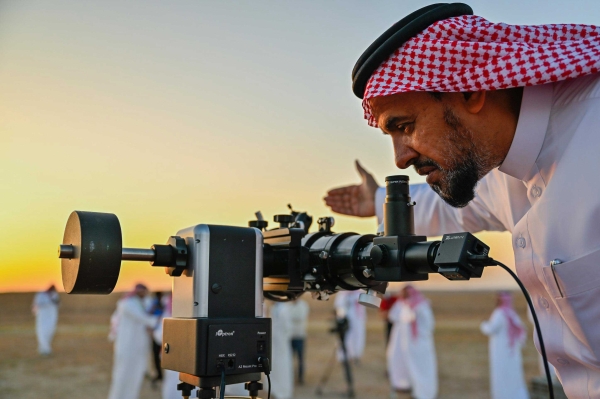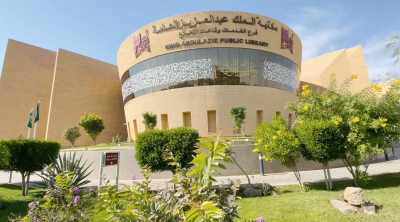
Tamir Observatory is one of the mobile observatories in the Kingdom of Saudi Arabia used for sighting the crescent moon of Hijri months. This practice has been conducted at the observatory since the 1920s. The observatory is located in the Tamir Center, in al-Majma'ah Governorate, in Riyadh Province. Among the well-known observers in Tamir are Ibrahim al-Barghash, followed by his son Abdulrahman, and then his grandson Mutaib.
Tamir Astronomical Observatory
Observers in Tamir used to sight the crescent moons from the west to determine the Hijri months and the seasons based on the stars. At that time, there were no tall palm trees or buildings, which allowed them clear visibility for observations. Then, the transition was made from the old observatory to the new one, which was established in 2015 under the supervision of Tamir Municipality.
The new Tamir Observatory is located to the west, surrounded by rocky areas that do not produce dust or dirt. The city lights are situated behind it, and it is elevated 658 m above sea level.
There are peak times for observers at the Tamir Observatory, such as during the sighting of the crescent moon marking the beginning of Ramadan, the end of Ramadan, the start of Dhu al-Hijjah, or Muharram. Observers also gather at the observatory at the end of each month. The sighting activities involve an accredited committee consisting of members from King Abdulaziz City for Science and Technology, the Ministry of Justice, the designated judge, his clerk, and the observers.
The phases of the moon, as observed from Tamir
The highest degree at which the moon has been observed from the Tamir Observatory in the summer is 293 degrees. From the south in the winter, the moon has been observed at approximately 262 degrees.
Crescent moon sighting in the Kingdom
The Kingdom places great importance on the practice of moon sighting due to its connection with Islamic rituals and worship. The responsibility for this task has been assigned to the Supreme Court, which ensures the reliability of the moon sighting process through several standards, including medical criteria. Observers undergo extensive training and a medical examination to test visual acuity. Their documentation is then reviewed by the Permanent Supervisory Committee for Moon Sighting at the Ministry of Justice, which operates under a Royal Order and is overseen by the Minister of Justice.
Judges are assigned to accompany observers at sighting sites across the Kingdom, supervised by King Abdulaziz City for Science and Technology (KACST). This is with the participation of experts in crescent moon sighting and several specialists in astronomy holding doctoral degrees in the field, as well as representatives from government entities. The selection of sites for these observatories is given special attention, adhering to geographical, scientific, and astronomical criteria to facilitate accurate crescent moon sighting. This ensures the reliability of the observatories in determining the visibility of the crescent moon.
KACST has provided several observatories for moon sighting, distributed across various regions of the Kingdom. These include fixed observatories in Makkah al-Mukarramah ("Umm al-Qura Observatory") and Tabuk ("al-Wajh" and "Halaat Ammar"), and mobile observatories in Riyadh ("Sudayr," "Tamir," and "Shaqra"), Qassim, Dammam, al-Madinah al-Munawwarah, and Hail.
Related quizzes


